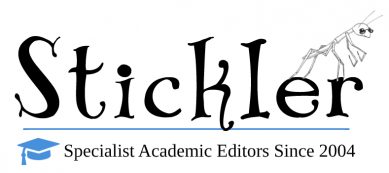The holidays can be both a wonderful and stressful time. Between preparing food, reconnecting with family, seeing friends, and buying gifts—not to mention the fact that everyone else is “out of the office”—it can be hard to find time to stick to your writing schedule and get work done. It’s important to be flexible with your writing schedule during the holidays, but that doesn’t mean that you have to set aside all of your work and wait for the new year to roll around. Below are some tips to keep you productive throughout the holiday period while still enjoying the festivities.
Protect Your Time
It’s important to remember that during the holidays you are likely to have less time to write. Things may get in the way, plans may change, and you might have to allocate some of your time to family and friends. Thus, it’s important to protect the free time that you do have. Think about points in your day during which you can carve out time—whether it’s a couple of hours or 30 minutes. It might be when you first wake up, after everyone else has gone to bed, or in between parties. Block that time out for yourself and protect it at all costs. Let people close to you know that this time is important, and make sure they understand why. That way, you won’t feel stressed about other things taking time away from your work.
Put in Place a Serious Schedule
If you struggle to use the free time you have for writing and find yourself waylaid by other tasks, it might help you to put a schedule in place ahead of time. Consider what time of the day you are usually the most productive (or what time of day you are claiming for your own—see the point above), how much time you have, and your ability to access a quiet and productive workspace. Then, sketch out a rough plan of what you will do during this time each day. Dedicating yourself to this schedule and putting your writing above other tasks will help you stay productive and on track, while still giving you time and space to do the million other things that need to be done during the holiday season.
Be Flexible and Forgiving
While the above points are important, it’s also vital to remember that life happens and sometimes other things may get in the way of writing, despite your best efforts. Being flexible and forgiving with yourself and your time is an important way to reduce stress and achieve a balance between work and fun. Maybe you’ve been invited to a family lunch during your scheduled writing hour, and have to choose between sticking to your writing plan or spending time with family you haven’t seen in a while. Sometimes it’s important to listen to yourself and follow your heart. Writing is important, but it might not be as important as family and friends. Plus, spending time with others can often give you a much-needed inspiration boost, or clear your head so that you’re more productive in the long run.
Engage in Writing in Other Ways
Even if you aren’t writing, there are other ways you can engage in your work or field. Whether it’s reading books or journals, revisiting an old draft, or catching up with what colleagues are working on, it’s possible to further your academic pursuits without actively writing. Sometimes it’s hard to sit down and find a quiet space to create new work during the holidays, so revision or editing are also great options to help move your work forward.
Balancing writing and the holidays can be tough if you don’t have the right mindset. By carving out time for yourself, sticking to a schedule, and also remembering to be flexible with yourself, you can achieve a balance of enjoying yourself while still getting work done.
To help you stay productive and meet your deadlines, we’re offering $20 off our Express Service (two-day turnaround rather than the standard four) throughout December. That means our two-day Express Service is $30 instead of $50! Just enter code “BlogExpress20” at checkout.
Happy holidays from the Stickler team!










